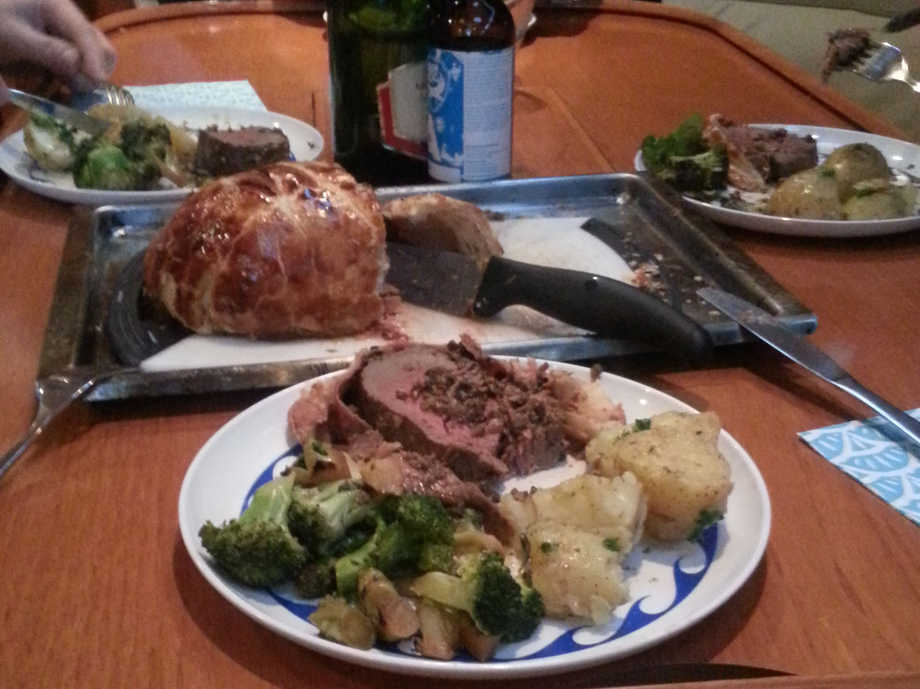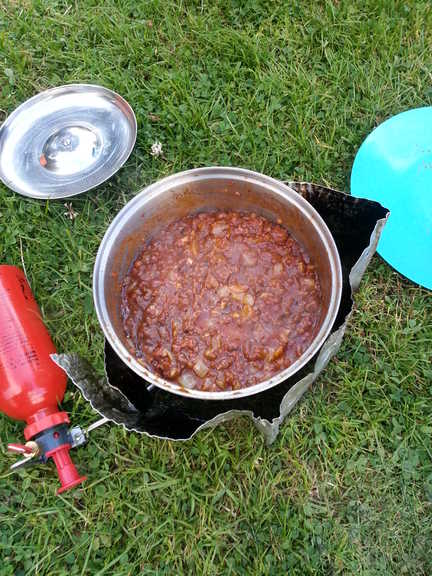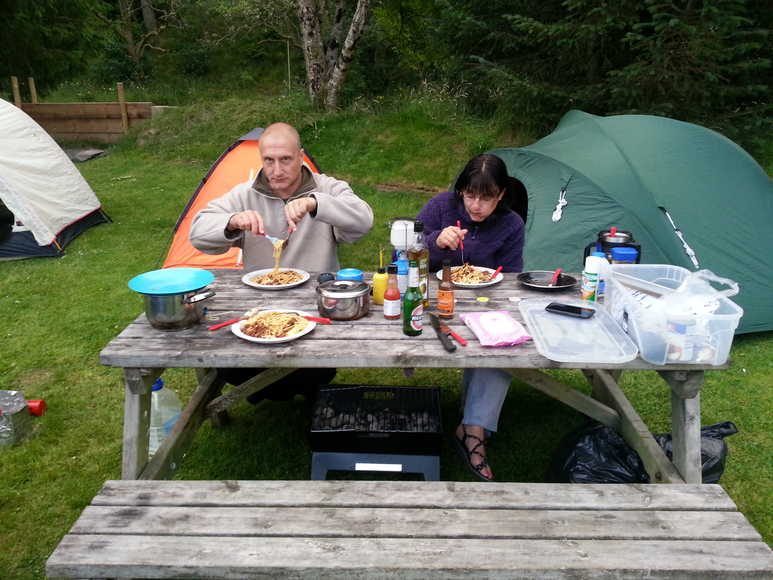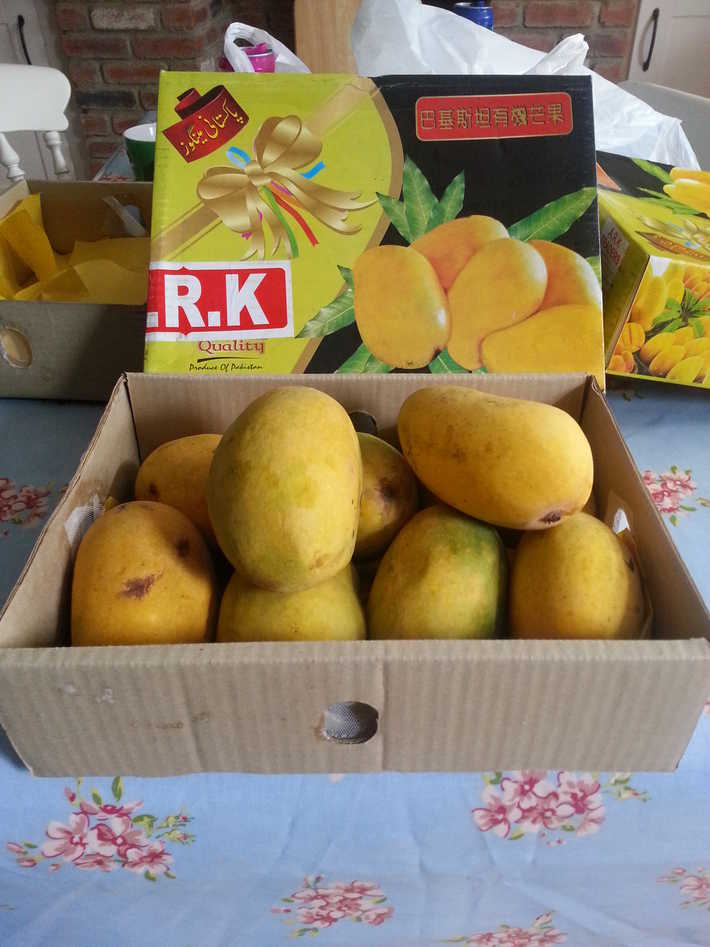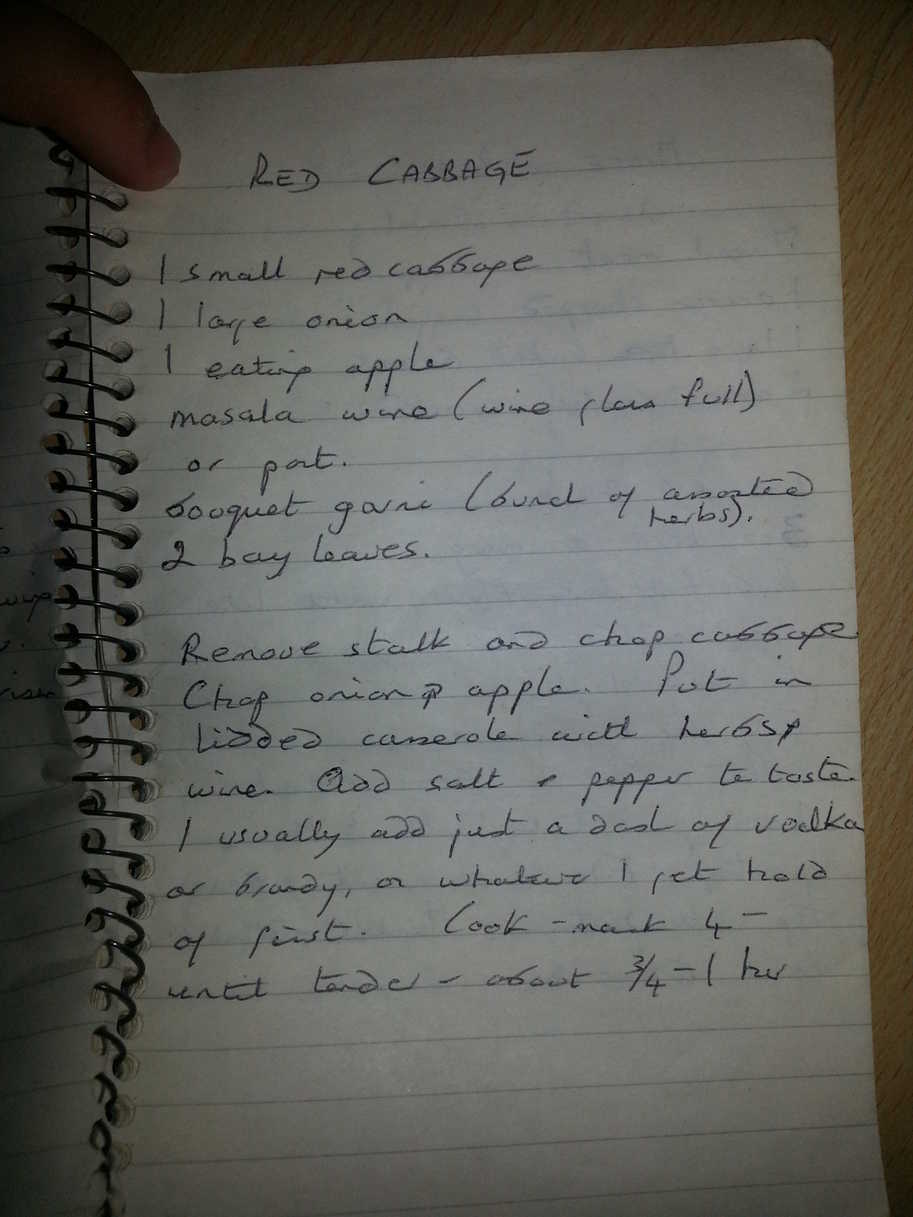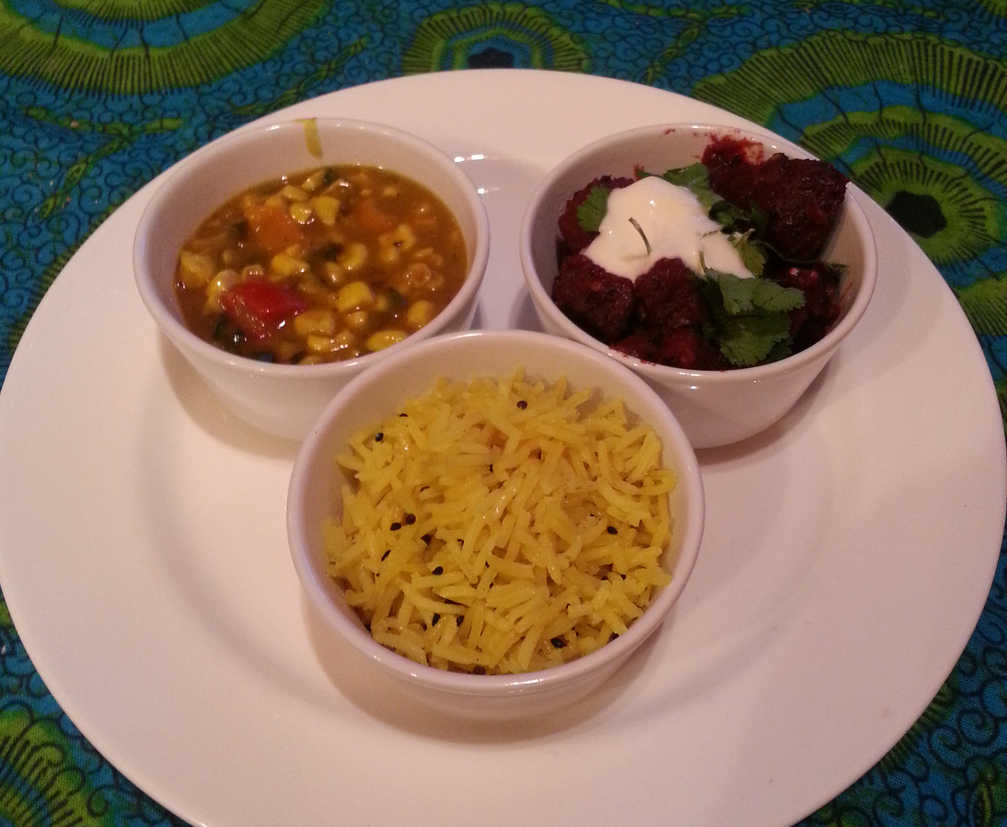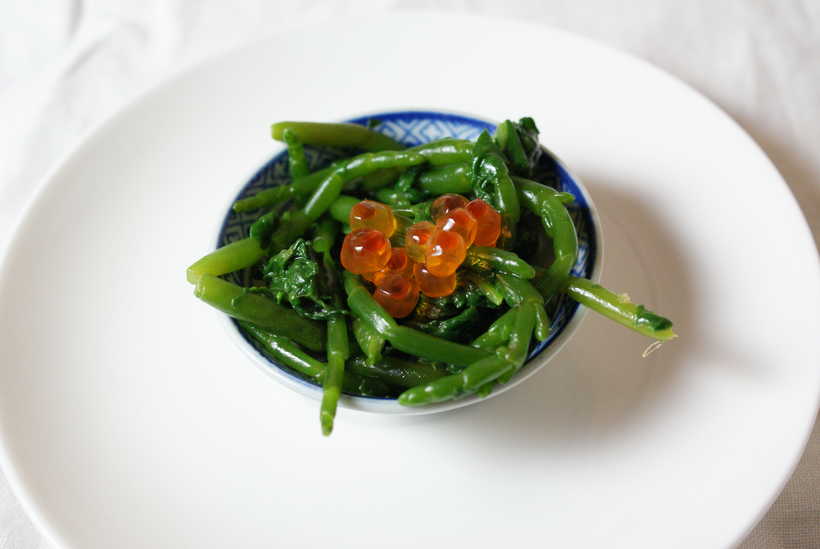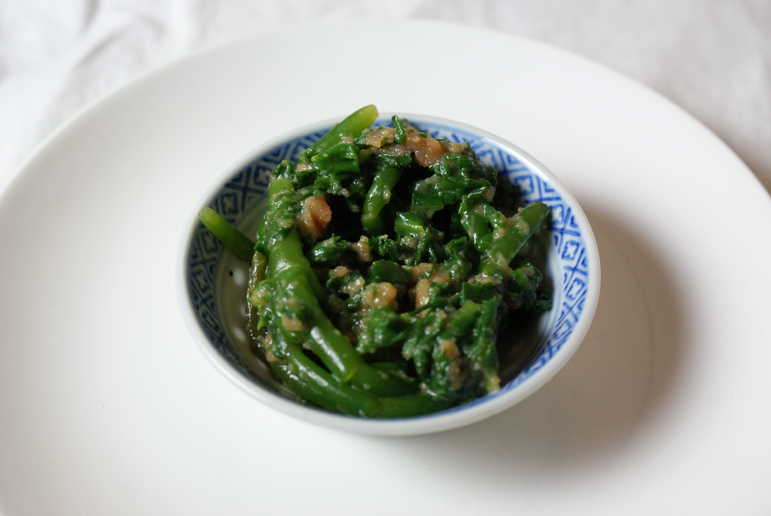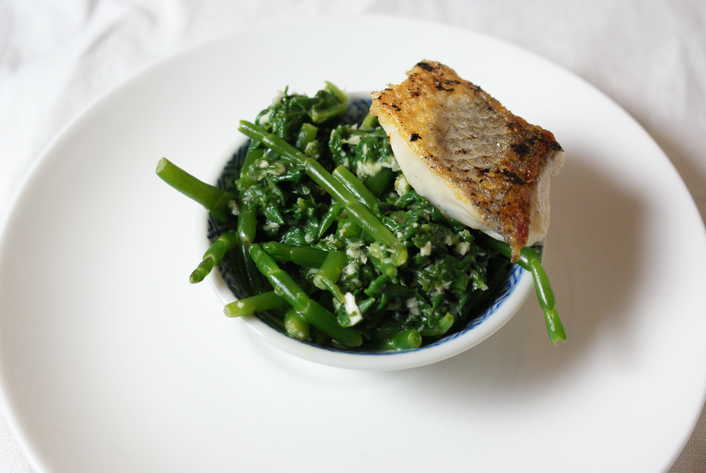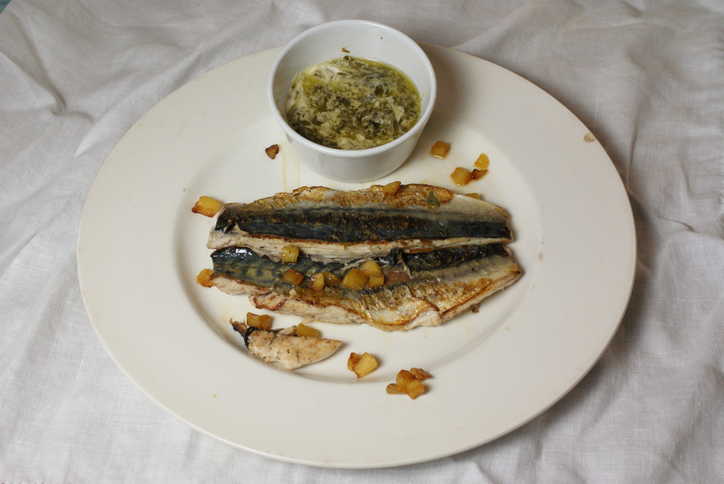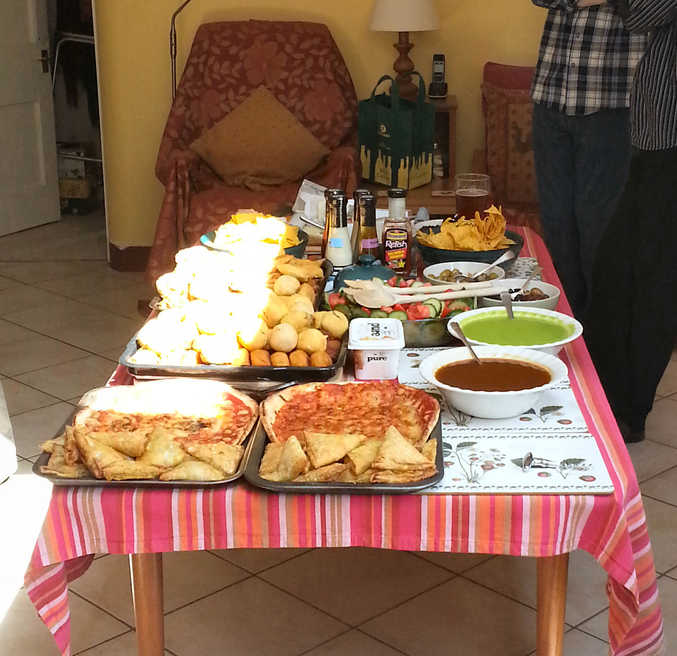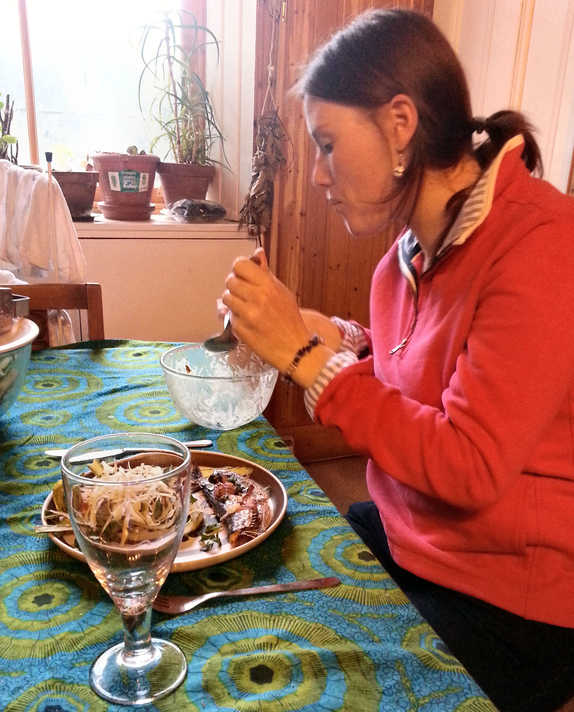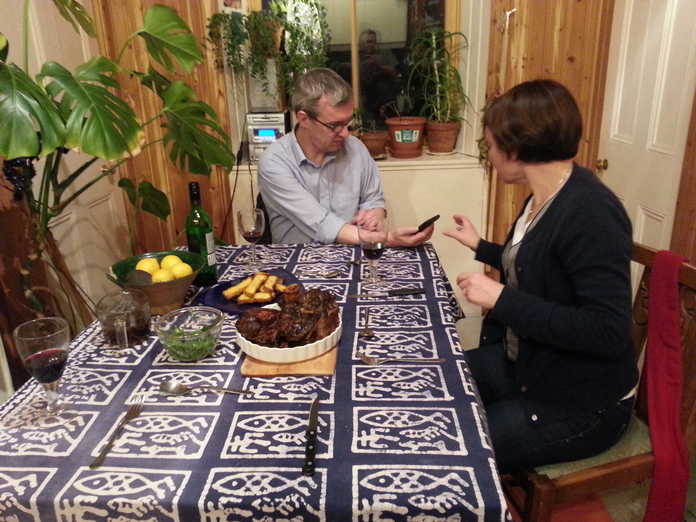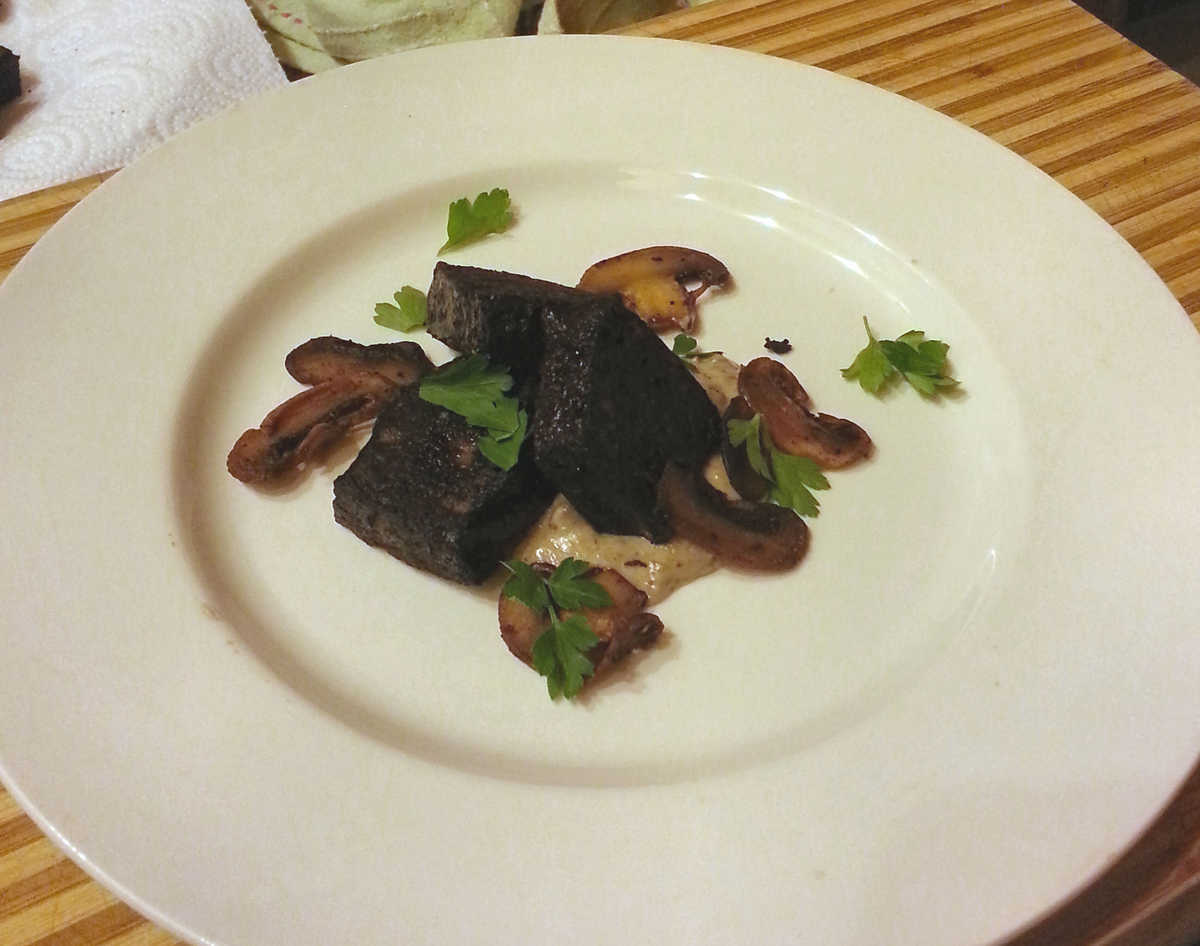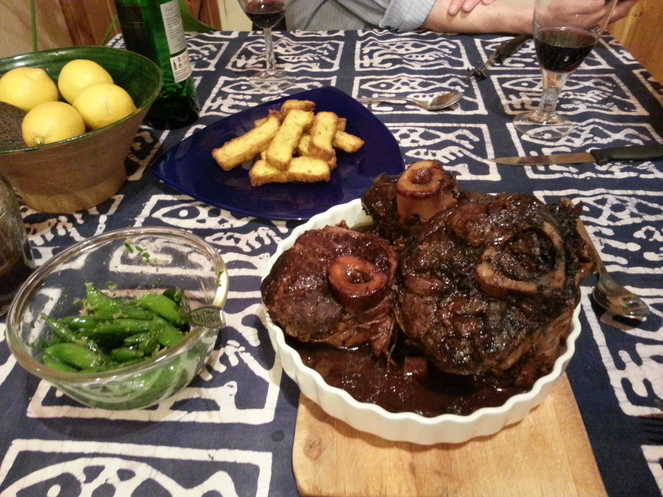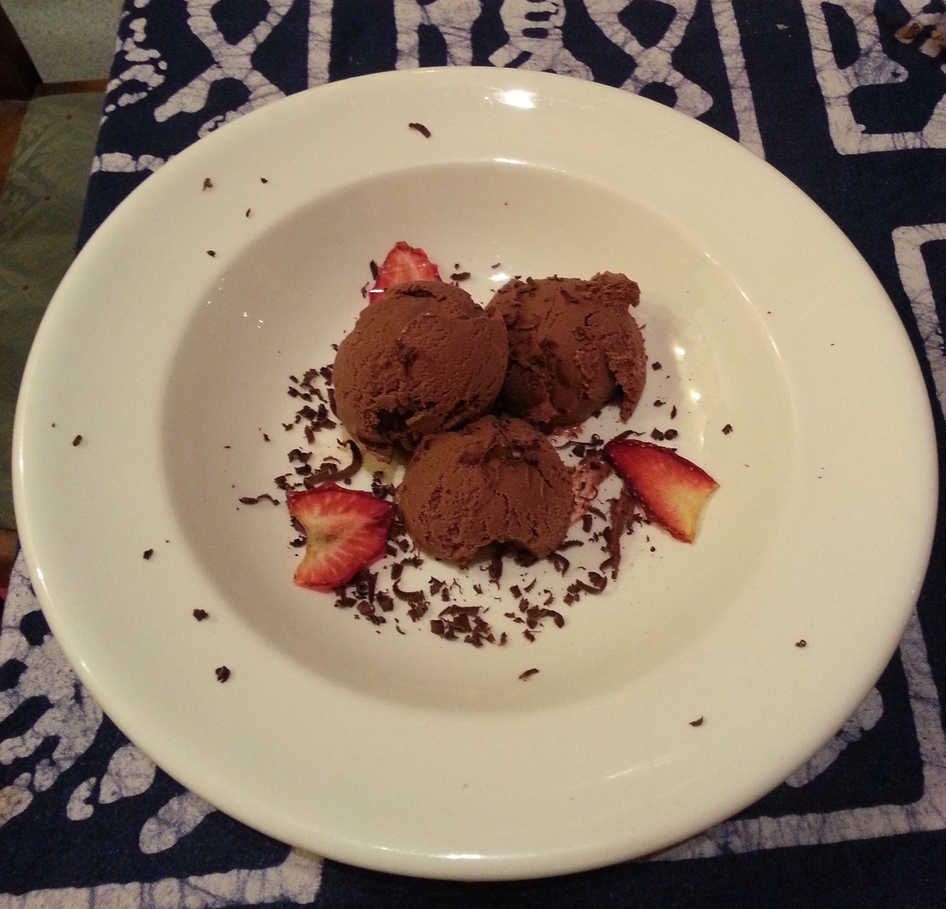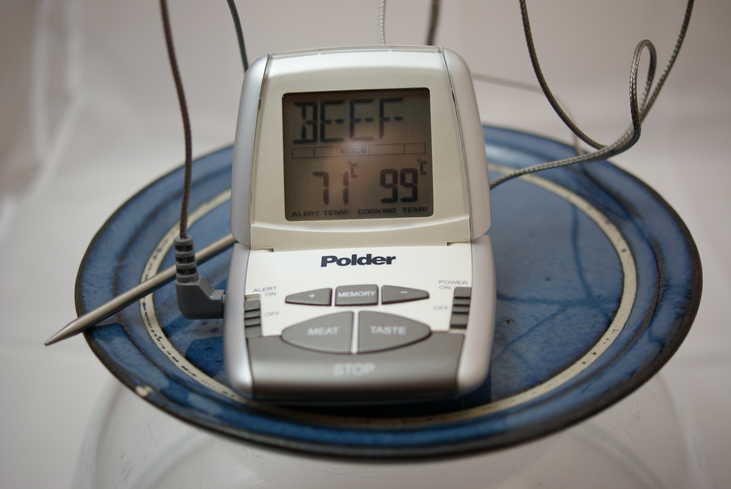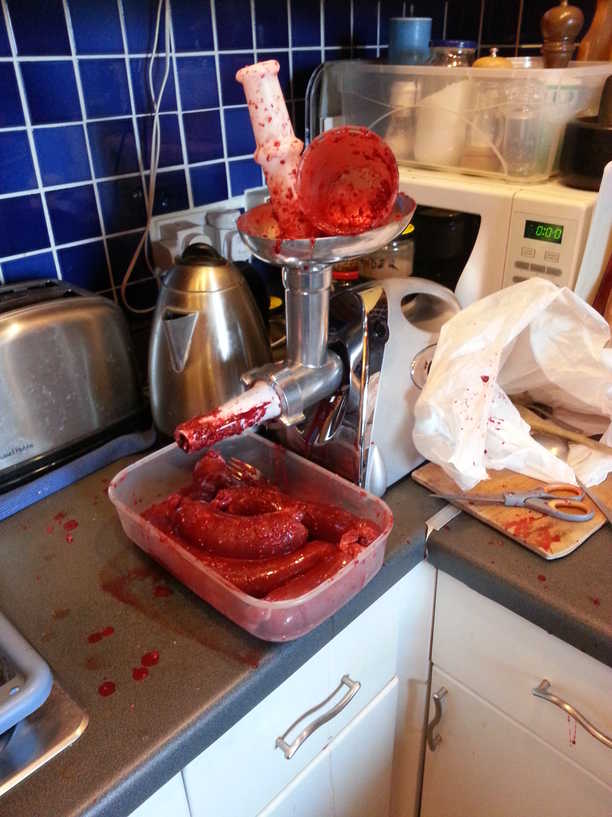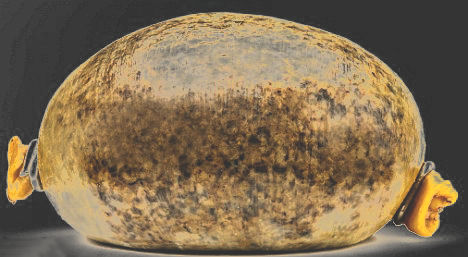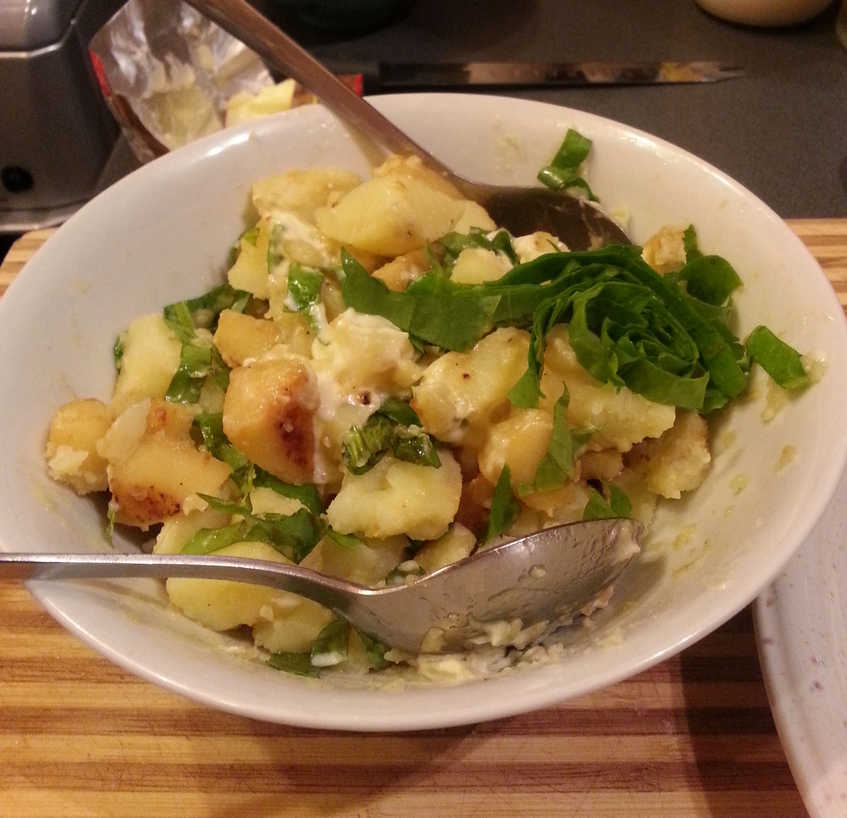
Wine in the Mouth, Love in the Eye

Love comes in at the mouth
And wine comes in at the eye;
That's all we shall know for truth
Before we grow old and die.
I lift the glass to my eye,
I lick you, and I sigh.
Or words to that effect.Another short stay in Eyemouth. This one not short enough, however.
We planned a simple overnight visit - in and out on our way to Lindisfarne, but the sea had other ideas. It rose into mighty crests which burst heavily into the harbour entrance for two days preventing us from leaving. We were particularly put off by the sight of a trawler being almost rolled onto the beach by an enormous wave which broke across it as it cockily put out to sea.
Then just when we thought it was finally safe to leave and made our way out through the swell, a series of massive waves rolled in at just the wrong moment pitching our boat so much that our companions still ashore claimed they could see our propeller!
We did get down to Holy Island for a day though. A very nice day too, so it all worked out.
To sustain us during our elongated stopover, and compensate for our persistent failure to book ourselves a table at the fabulous Churches seafood restaurant, I made the most ridiculous ship-board meal I could think of for our last dinner - a beef wellington!
Bet you haven't had that on a boat before?
Eyemouths lamentable lack of digestible restaurants is easily matched by its dearth of food shops. It does boast a decent butcher (yep, just the one), who also grows potted herbs out back and is happy to hand a few over with your surprisingly expensive order of meat. I don't imagine the local demand is large.
Otherwise there is a fantastic baker, a greengrocer with unfathomable opening hours that I assume exclude any daylight, and the standard Local Fucking Supermarkets™.
One of which did, in fact, stock a fresh herb. It was coriander. I did visit them on a Tuesday, so perhaps they stock a different herb on other days. Thank God for the butchers eh?
Comments (2)
Memorial Camping Trip

On the anniversary of Mum's death my siblings Kurt, Karen and I met up for a camping weekend near Samye Ling - the Buddhist centre where last year we scattered her ashes, so we could eat some of our family's traditional spaghetti bolognese (for which I sacrificed one of my precious, precious remaining tins of Campbell's condensed oxtail soup) in its natural environment: A sulky silence in the great outdoors.
I enhanced the recipe a little - I ground up my own beef mince You really can't trust that pre-ground stuff you know; it's where they hide the horses. Not to mention the lips and arseholes. and ran a little chorizo through too for some extra flavour though it would be better fried separately. I did desperately try to find some of that enormous two-foot-long spaghetti that used to be the only stuff you could buy, to make the experience as authentic as possible, but all my Local Fucking Supermarkets™ have simultaneously decided not to stock it any more, so that was that.
(I Later, too late, randomly discovered some packets in my local fucking Lidl™ which I suppose is a sad comment on the parlous state of this nation of shops.)
Unfortunately I also forgot to add the mushrooms to the sauce: much to Kurt's delight - he doesn't like fat mushrooms; too squeaky!
Kurt: Mum's recipe doesn't use mushrooms.
Us: What recipe?
Kurt: From her recipe book.
Us: What recipe book?
Kurt: Er...
Us: What recipe?
Kurt: From her recipe book.
Us: What recipe book?
Kurt: Er...
And thus was revealed Mum's secret recipe book that Kurt has been hiding for all these years!
Apparently she wrote down the instructions for a bunch of our favourite dishes when Kurt first moved away from home and had to start cooking them for himself.
Somehow he just forgot to mention it to any of us later.
I've updated the section of my Olde Recipe Booke to reflect this new treasure trove, but there's also one or two gems that were a surprise to me - like this red cabbage.
Who knew? Well, apart from Kurt, obviously.
We camped at Honey Cottage Caravan Park in the Ettrick valley near Selkirk, a pretty beatiful area actually, well provided with terrific walks, walking trees, midges and a complete absence of phone signal. I sensibly took my mosquito net hat with me, but Kurt was forced to improvise with the underwear to hand.
I don't see it catching on!
I took the opportunity to chum Kurt and Karen back down to Bradford and stock up on Spicey Cottage curries and those delicious Pakistani honey mangoes, they being in season just now.
It was there that we inexplicably managed to upset Karen enough to send her home in a huff. Who knows how - she's a girl.
Same time next year Karen?
Red Cabbage
side veg vegan
Via Kurt's secret recipe book.
Dunno where she got this one - not from me!
Dunno where she got this one - not from me!
Ingredients
- 1 small red cabbage
- 1 large onion
- 1 eating apple
- 1 wine glass Marsala wine or port
- dash vodka or brandy
- bouquet garni
- 2 bay leaves
Remove stalk and chop cabbage.
Chop onion & apple.
Put in lidded casserole with herbs & wine. Add salt & pepper to taste.
I (this is Mum talking) usually add just a dash of vodka or brandy, or whatever I get hold of first.
Cook at Gas Mark 4 until tender - about ¾-1 hour.
Chop onion & apple.
Put in lidded casserole with herbs & wine. Add salt & pepper to taste.
I (this is Mum talking) usually add just a dash of vodka or brandy, or whatever I get hold of first.
Cook at Gas Mark 4 until tender - about ¾-1 hour.
Seems pretty racy for one of Mum's recipes. I haven't tried it, but provide it here for your delectation.
Curry Prolapse

Anal prolapse? Nope, just the after-effects of a particularly vigorous beetroot curry.
Quite a tasty one too as it happens.
Friday night I settled in to a nice long bath with a crate of Marstons and one of my frozen Spicey Cottage Karahi Goshts. I need to whittle them down since I'll be getting the chance to replenish my supplies soon enough when the family get together to observe the anniversary of Mum's passing. As usual I made up a batch of yoghurt sauce to go with, and as usual when I sobered up the next day and cleared away the empties I'd ended up with loads left over.
So I went through the fridge and made curries with whatever I found there, including those beetroots which still haven't made it into macaroons. I borrowed the beetroot curry recipe, but the sweetcorn is all my own work.
Very tasty they were too, though I say so myself.
Just don't peer too closely at the toilet bowl the next day ;)
Godwin's Law

Christ, the front page of the Torygraph on-line this morning is like (forgive me!) reading the manifesto for the German Socialist Unity Party.
Our glorious Prime Minister pledges future legislation to prevent workers from organising strikes to defend their interests. The two largest parliamentary parties and a third, enabling, opportunist rump, have secretly colluded to fast-track a law permitting the secret services to continue their illegal mass surveillance of the British people. Our Government announces its consideration of a law to prosecute those citizens who insufficiently inform on their friends, relatives and neighbours when they are suspected of criminal behaviour.
These are not the laws of a democratic, liberal, free society. These are the laws of totalitarianism, the diktats of a parliament which is at war with its own people. They are the statutes of a political class which is afraid of its own electorate.
Afraid that they might organise to oppose government dogma.
Afraid of what they might communicate, unwatched, to each other. That they might hold or express opinions of which the political elite does not approve.
Afraid of them forming unauthorised, independent relationships outside of state control.
These are the laws which totalitarian regimes use to monitor their cowed citizens, to disrupt opposition to the will of their ruling class, to round up the family and friends of suspected dissidents better to intimidate the populace.
A pox on your parliamentary house.
Here, have a sardine.
Synchro Nicety

I've had a busy week on the water with the 707 yacht UK Nationals happening at Granton this year; their first time in Scotland.
I volunteered my services in the pit of Synchro; one of the boats sailing down to the regatta from Port Edgar, and thanks to Rachel's indefatigable campaigning we also acquired the helming skills of the incumbent, and five-times champion Jon Powell and his other half, sailing journalist and former editor of Practical Boat Owner, Sarah Norbury.
It was fascinating watching him handle the boat, especially at the start where he managed to authoritatively stake out his space whilst keeping the boat moving slowly but under control for an astonishingly long time barely feet from the line.
I hope I picked up some good tips for getting a boat to the front of the pack.
Though Jon was surprisingly uninterested in the general sail and rig settings, other than the jib car position and getting the mainsail as high as possible, he was very keen on making sure the forestay was extended as far as it would go, and he did tweak the shroud tensions whenever he felt the boat wasn't moving as it ought. He was also quite critical of the parlous state of Synchro's bottom when we craned it out to give it a clean. Which I thought was in pretty smooth shape; shows you what I know.
Despite holding Jon down to only a fifth place, I hope I made a better fist of volunteering as crew than I did volunteering for the Competitor Management Team :( Apologies to Dara O'Malley who did a superb job of managing without me.
I particularly enjoyed sailing Synchro single-handed down to Granton; I rigged myself an auto-helm by tying shock cord to the tiller handle, so I could go forward and fly the spinnaker and everything! Very smooth, apart from its occasional inclination to furiously round up once I had my weight on the bow. I quickly learned how sensitive a 707 is to being steered by moving weight around to change the trim. At least, it is when the tiller doesn't move. Much.
I'd considered introducing our Southern guests to some traditional home-made Scottish tablet, but I just didn't have time to get round to it. Even my packed sandwiches were pathetic affairs of supermarket white bread and sliced packet ham, but spurred by Rachel's scathing criticism I stayed up extra late to make some taramasalata from the smoked cod roe I just happened to have lying around, as you do, and a Very Tomato Bread that I thought might make some tasty sandwiches with a bit of lettuce and that coddy roe flavour. My taramasalata sandwiches usually have sliced tomatoes in them anyway.
Hopefully I redeemed myself?
Isn't it amazing how shopping for a single ingredient can so rapidly snowball into a fridge-full of tenuously unrelated ingredients?
Or is that just me?
Take the cod roe.
After my recent, and very impressive, visit to Martin Wishart's restaurant (watch this space) I decided to have a go at reproducing Wishart's astonishingly airy beetroot macaroons with their horseradish cream topping.
First I needed horseradish, which is of course unobtainable from any brand of Fucking Supermarket™ so I resorted to scouring Edinburgh's various hippy-food stores. I started with the dependably earthy Real Foods store which did have in stock some vastly knobbly roots labelled wild horseradish. I gave them a good scrape with my nail, but they didn't yield any of the excoriating pungency I normally associate with horseradish, plus I didn't fancy trying to peel their twisted convoluted shapes, so I passed.
I did however spot a leafy bunch of beetroots and a bag of lovage. A massive bag of lovage.
Now I know from my visits to the Star Inn how nicely a hint of lovage can go with spinach and samphire, so now I had to buy some spinach. And some samphire. And still, of course, the horseradish. Fortunately the ever-reliable Tattie Shaws came up with the horsey goods, as well as the spinach.
The samphire was proving more tricky since my local fishmonger had run out, and after visiting all the others within cycling distance I decided to leave it for later in the week. On to the next macaroon ingredient - powdered egg whites.
An online search, a pilgrimage to Waitrose and a typically inept offline search through their shelves finally turned up Dr. Oetker's surprisingly small packet. Not a completely wasted search though - I was excited to discover a pack of smoked cod roe which I've been vaguely looking for so I could try making up some taramasalata. NOW you see the connection! It also gave me the idea of trying to blend it into the horseradish cream to top those macaroons, instead of the smoked haddock alternative I'd had playing at the back of my mind. The cod roe was sitting next to a small jar of salmon eggs, so I bought that too. I've had a salad in mind for them, but that's a whole other shopping expedition and the jar seemed like the kind of thing that would keep quite a while in the fridge.
Over the next few days I also tracked down samphire at my favourite fishmonger near my work (though they don't do cod roe!) and picked up a fillet of Sea Bass to go with, stocked up on lemons and crème fraîche and set to on my dinner.
Since I now had such a plentiful supply of novelty ingredients I thought I might try a few fun variations on the samphire/spinach/lovage combo:
- regular: Blanched the samphire, made up a beurre monté (pacé Martin Wishart)
and sweated a half-dozen sliced lovage leaves with the spinach. Drained, re-blanched the samphire and mixed together.
Good - though it turns out you can overdo the lovage - horseradish: Grated some horseradish, lubricated it with lemon juice and mixed it into the samphire/spinach/lovage.
Not awful, but not exactly a match made in heaven. - salmon eggs: Quite beautiful - glistening like orange jewels on a froth of emerald silk.
Unfortunately it doesn't taste as good as it looks - the salmon eggs are great big fat things and the samphire is too easily overwhelmed by the burst of fishy flavour when you bite into one. - cod roe: Stir in some buttered cod's roe. No need for the spinach here -
it works better without.
A match made in heaven!
And I still haven't made the macaroons!
The Man of Constant Sorrel

Ah, Sorrel Day rolls around again.
No, as you might think, it's nothing to do with the sadly neglected, but deliciously tart seasonal leafy vegetable - it's a memorial for the Battle of Mont Sorrel near Ypres during World War I. Way to die - you glorious bastards!
It just happens to be slap-bang in the middle of sorrel season - when you might be lucky enough to find sorrel for sale in your more earthy organic food stores or at the local farmers' market. You certainly won't find it many other places - it is now considered an un-fashionably challenging flavour for we Britons and is therefore never to be found in your local Fucking Supermarket™.
Which is a pity - it's a very easy vegetable to prepare; you can use it raw in salads (strip out thick stalks) or wilt it to make a silky sauce.
Like spinach, which it resembles, sorrel wilts down to nothing so you'll need to use more than you expected.
Unlike spinach it turns a slightly unpleasant cowpat brown when cooked so you may want to disguise the color.
Sorrel also has a distinctly tangy, acidic flavour not unlike rhubarb. And like rhubarb and gooseberries it gives my teeth little socks to wear.
My youngest ex-daughter Georgina cooked me a very tasty (and very tastefully presented) dinner last week Great job Georgina! in exchange for maths lessons, and she could have substituted some sorrel for the spinach in her Easy Cheesy Bake, but then it seems only yesterday we were struggling to persuade her to eat identifiable vegetables. So I'll settle for small miracles.
As I encourage her through the mysteries of algebra: Baby steps, Georgina, baby steps.
Potato Salad with Apple and Sorrel
salad veg
Just make this like you would a regular potato salad, but with apple and sorrel.
Or just the sorrel.
You can dress the salad with a vinaigrette or with a loosened mayonnaise as I have.
Or just the sorrel.
You can dress the salad with a vinaigrette or with a loosened mayonnaise as I have.
Serves 2
Ingredients
- 6 new potatoes
- 1 Braeburn apple
- handful sorrel leaves
- olive oil
- drizzle lemon or lime juice
- salt & pepper
- 2-3 tablespoons mayonnaise optional - just use a vinaigrette if you prefer
Wash the sorrel leaves, pull off their thick stalks, roll into cigars and slice into ¼" rolls.
Mix up a quick vinaigrette with a little olive oil, lime juice and seasoning.
Boil the new potatoes in their skins until they don't resist peneration with a knife.
Meanwhile peel and core the apple, and cut into 1" pieces. Rub with olive oil, season with salt and pepper and fry over high heat, shaking often, until they are nicely coloured but still firm.
When the potatoes are cooked, scrub or peel them and cut into 1" pieces. Combine with the apple pieces whilst still warm and dress with the vinaigrette.
Fold in the sliced sorrel.
When the salad has cooled a little, loosen the mayonnaise with a little more lime juice and olive oil and stir into the salad to coat everything thoroughly, being careful not to completely disintegrate the potatoes.
Season if necessary, and serve cooled but not cold.
Boil the new potatoes in their skins until they don't resist peneration with a knife.
Meanwhile peel and core the apple, and cut into 1" pieces. Rub with olive oil, season with salt and pepper and fry over high heat, shaking often, until they are nicely coloured but still firm.
When the potatoes are cooked, scrub or peel them and cut into 1" pieces. Combine with the apple pieces whilst still warm and dress with the vinaigrette.
Fold in the sliced sorrel.
When the salad has cooled a little, loosen the mayonnaise with a little more lime juice and olive oil and stir into the salad to coat everything thoroughly, being careful not to completely disintegrate the potatoes.
Season if necessary, and serve cooled but not cold.
The apple/sorrel combination is really good.
Mackerel with Sorrel Sauce
fish starter main
This makes a super quick supper dish - it'll take you longer to fillet the fish than it will to cook it. Or at least, it did me!
The sorrel sauce, which beautifully complements the mackerel fillets, is simplicity itself to make - all you need to do is cook the sorrel in a little butter until it wilts. It naturally collapses into a rich silky sauce with no effort on your part.
You can enrich the sauce with cream or crème fraîche and thicken it with egg yolk.
Or you can do as I have here (not having any cream or eggs) and thicken it with flour, finishing with a little yoghurt.
Or you could serve it neat. Your call.
The sorrel sauce, which beautifully complements the mackerel fillets, is simplicity itself to make - all you need to do is cook the sorrel in a little butter until it wilts. It naturally collapses into a rich silky sauce with no effort on your part.
You can enrich the sauce with cream or crème fraîche and thicken it with egg yolk.
Or you can do as I have here (not having any cream or eggs) and thicken it with flour, finishing with a little yoghurt.
Or you could serve it neat. Your call.
Serves 2
Ingredients
- 200g sorrel
- 4 mackerel fillets from 2 fish
- Sea salt and freshly ground black pepper
- 1 tsp olive oil
- 50g unsalted butter
- ½ tsp flour
- 1 tbsp yoghurt
Wash the sorrel well, remove and discard the stalks and chop the leaves coarsely.
Season the mackerel fillets with a little salt and pepper. Put a heavy-bottomed frying pan over a medium heat and add a thin film of olive oil. When the oil is fairly hot, lay the fillets skin side down in the pan. When the flesh is almost completely white, flip over for just a minute to finish cooking - the whole process shouldn't take more than five minutes. Transfer to a warm plate while you make the sauce.
Splash a tablespoon or two of water into the pan in which you cooked the fish, then gradually whisk in the butter to make an emulsion. Scatter in the flour and stir for a few minutes to distribute and thicken, then throw in the sorrel, which will quickly wilt and turn a dull greeny-brown. Season. Leave to cool for 30 seconds then briefly stir through the yoghurt
Season the mackerel fillets with a little salt and pepper. Put a heavy-bottomed frying pan over a medium heat and add a thin film of olive oil. When the oil is fairly hot, lay the fillets skin side down in the pan. When the flesh is almost completely white, flip over for just a minute to finish cooking - the whole process shouldn't take more than five minutes. Transfer to a warm plate while you make the sauce.
Splash a tablespoon or two of water into the pan in which you cooked the fish, then gradually whisk in the butter to make an emulsion. Scatter in the flour and stir for a few minutes to distribute and thicken, then throw in the sorrel, which will quickly wilt and turn a dull greeny-brown. Season. Leave to cool for 30 seconds then briefly stir through the yoghurt
You can serve the wilted sorrel sauce unvarnished, or if you prefer you could enrich it following Hugh's instructions:
Put the butter into the same pan in which you cooked the fish and melt over a medium heat. When the butter is frothing, throw in the sorrel, which will quickly wilt and turn a dull greeny-brown. Give it a swift stir, remove the pan from the heat, let it cool for 30 seconds, then beat in the egg yolk, which will thicken the sauce. Season to taste with salt and pepper, and enrich the sauce by stirring in the double cream.
Serve the mackerel with the warm sorrel sauce and some waxy new potatoes, a green salad,
or this potato salad with apple and sorrel if you haven't had enough sorrel.Put the butter into the same pan in which you cooked the fish and melt over a medium heat. When the butter is frothing, throw in the sorrel, which will quickly wilt and turn a dull greeny-brown. Give it a swift stir, remove the pan from the heat, let it cool for 30 seconds, then beat in the egg yolk, which will thicken the sauce. Season to taste with salt and pepper, and enrich the sauce by stirring in the double cream.
Good. Very good actually. Much like a rhubarb sauce the sorrel nicely complements the oily fish.
You can also serve it decorated with small fried cubes of apple, deglazed with white balsamic vinegar. That you might still have left over from your Carrot, Orange, Ginger and Red Lentil Soup.
You can also serve it decorated with small fried cubes of apple, deglazed with white balsamic vinegar. That you might still have left over from your Carrot, Orange, Ginger and Red Lentil Soup.
Green in Judgement, Cold in Blood


Take this stainless steel vacuum flask. Alright, it's not a Thermos™ - it's a Tescos, and OK it didn't cost me £20 it cost me £3. But still, you'd like to think it would actually work. For keeping soup hot and stuff.
Wouldn't you?
Well, you'd be disappointed. Like all modern products, it works about a half-dozen times, then breaks. Or dies. And you have to throw it away and buy a new one.
Time was, you would buy a vacuum flask and expect to pass it on to your children. Of course that was a proper Thermos™. But then when I look at Amazon's reviews for proper Thermos™ flasks a disturbing number of people say that theirs stopped working after about a half dozen goes and had to be thrown away.
It's actually getting so that I accept this state of affairs. I plan on things being shite, and having to throw them away in a few months. I buy them by the dozen to compensate. I calculate my return on investment between buying one thing that isn't shite and buying twenty that are, and usually come out with the shite ones. It's just less risk. Particularly when most of the stuff I buy these days is sight-unseen off of the internets.
But I ask you - is this any way to run a civilisation? Make everything as cheaply as possible in the Far East so it has to be used once then thrown away?
No wonder we're running out of resources, and money.
When everything's shite.
Malvern is one of those quietly decaying ancient spa towns which still reek of Victorian self-assurance and which were once not shite. The place is still quite proud of being where they build Morgan sports cars - the epitome of quality artisanal discomfort. Enormously expensive, hugely durable but vastly time-consuming roadware whose components are each carefully hand-crafted things of beauty but which somehow fail to all properly fit together, like the Land Rover they had the reputation of being, well, a bit shite. Nevertheless, on the back of such pumping, pounding, pistoning shite was our empire built.
World-beating shite.
Shite that lasted.
In 1994 we sold Jaguar Land Rover to the Germans, then on to the Americans in 2006 and finally the Indians in 2008.
We had an empire once. Now we can't even make our own bicycles. Isn't it a fucking disgrace?
Anyway, I recently drove down to Malvern to visit my old friend Niel of Raha for his 50th Birthday HA! Now you see the investment in my own extravagant birthday celebrations paying off! and it turned into a right old curry-fest:
I dropped in on my brother on the way down which mandated our traditional Spicey Cottage curry takeaway, and again on the way back up when we were obliged to consume another round of Karahi Goshts so that I could bring a couple back home to freeze.
I booked into the handily-placed Foley Arms Wetherspoon Hotel in the centre of Malvern - handily-placed for the pub downstairs anyway - where I met up with my dear old college chums Chris and Cathy Hardly-Home.
Robin and Marion Tart were there too JOKE - Hi Rob! and we all went out ... for a curry at the very good, but unadventurously titled Bengal Brasserie [may now be closed down] opposite.
Next day at Niel's place, his wife Roz laid on a very tasty curry buffet for lunch before we hiked up the Malvern Hills for a geography lesson over a plastic of Cava. Then back down for an evening of curry at another local restaurant, followed by Port and the Matrix.
Couldn't have been better.
In honour of his birthday I added a new vegan category to my recipe indexer - did you notice?
HAPPY BIRTHDAY NIEL!
Anyhoo, I actually wanted to talk about salads: as Shakespeare tells us - these are our salad days, the days of spring and early dawns. Bikini weather is fast approaching and suddenly I have several days of solid currying to shake off.
Once famed for its restorative spring waters, nowadays Malvern is stuffed with bookshops, charity stalls and tat emporia for the visiting cardigan-and-pipe brigade, not to mention those curry restaurants, but it also happens to be host to a quite reasonable Farmers' market in the Priory grounds where I couldn't resist buying freshly-picked local asparagus from the Vale of Evesham and a pot of garlicky green olives to turn into salads when I got them home, though by then the asparagus was starting to turn just a little bit leathery :(
Flora came round to enjoy the asparagus salad and moan about the leather with some simple fresh grilled sardines and moan about the bones. Quoth the redhead: The sardines taste great - but I just can't be arsed with all the bones.
I had to invest in a couple of avocados for the salad dressing, but they developed into a very reasonable strawberry-mayonnaise-dressed avocado salad of their own, on which I used up the last of my poached eggs as a topping.
I mean I used up the last of my eggs. Obviously they weren't poached when they started. They were just raw; I imagine the chicken would be very upset to lay poached eggs. Especially if they were boiling hot at the time.
Maybe the chicken I poached for my Coronation Chicken sandwiches would have laid one. If it wasn't DEAD.
Coronation Chicken is a salad right?
Like soup. That's a salad too.
So I made a couple of those.
Soups.
I used the stock leftover from poaching my Coronation Chicken to make an extremely good Carrot, Orange, Ginger and Red Lentil Soup or Dark Chicken Stock. Then I asked Rachel, my ex-partner partner Yep, that does make sense in our defence of the Burnside trophy what kind of soup she'd like me to bring.
In my shiny new shite Tescos flask.
That's Port Edgar Yacht Club's Alastair Burnside memorial two-handed trophy yacht race that we won last year. And again this year as it happens. I blame the damn fine cauliflower and blue cheese soup she requested.
And that's it.
Wow, it's been a LOOOONG spring!
Rosso Buco

I've been wanting to do a nice rich red-wine pot-roast in my slow cooker for a while. When my butcher offered me a whole monster veal shank for £25 I jumped at it. Despite his scepticism about my choice of wine colour (Osso Buco is more properly braised in white wine) the more I admired the glorious meat, the more I convinced myself it would take a good red wine. It was a surprisingly hefty joint - weighing in around 3kg, and the flesh quite rich and dark, so I'm guessing it was an older calf than that usually used for Italian ossobuco but ideal for taking the stronger flavour of red wine. Which is handy because I happened to have several leftover bottles lying around begging to be used up.
Aidan and Jude very kindly came over to help out with eating some of my black pudding
(this time some of the baked loaf version I'd cut into sections and frozen)
and to lend a hand with the monster shank. Lucky for me or I'd be dying of rosso buco poisoning about now.
They also made handy guinea pigs for my latest ice cream innovation - avocado and chocolate flavour!
Apart from the hours of slow-cooking my monster shank, most of the meal prep work was done the night before and the remainder was pretty easy to turn out for dinner.
I served the fried homemade black pudding on a creamy mushroom sauce, with a little strawberry-dressed mixed leaf salad and some red onion.
Since my monster cuts of shank were too intimidating to serve individually I just piled them into a quiche dish and dressed them with the strained cooking liquor for the guests to help themselves.
They seemed well satisfied :)
Though I think they approached dessert with some justifiable trepidation (memories of my crab ice cream still too raw for comfort) they seemed pleasantly surprised by the result. I'm not sure it's actually better than plain old chocolate, but it's certainly not worse. Plus you get to watch your guests faces when you tell them it's avocado and chocolate flavour.
And you can't put a price on that!
Cheers!
They also made handy guinea pigs for my latest ice cream innovation - avocado and chocolate flavour!
Apart from the hours of slow-cooking my monster shank, most of the meal prep work was done the night before and the remainder was pretty easy to turn out for dinner.
I served the fried homemade black pudding on a creamy mushroom sauce, with a little strawberry-dressed mixed leaf salad and some red onion.
Since my monster cuts of shank were too intimidating to serve individually I just piled them into a quiche dish and dressed them with the strained cooking liquor for the guests to help themselves.
They seemed well satisfied :)
Though I think they approached dessert with some justifiable trepidation (memories of my crab ice cream still too raw for comfort) they seemed pleasantly surprised by the result. I'm not sure it's actually better than plain old chocolate, but it's certainly not worse. Plus you get to watch your guests faces when you tell them it's avocado and chocolate flavour.
And you can't put a price on that!
Cheers!
menu
Starter
Homemeade Black Puddings with a mushroom sauce
Main
Rosso Buco
Blanched Sugar Snap Peas dressed with Gremolata
Fried Herb Polenta
Dessert
Avocado Chocolate Ice Cream
Homemeade Black Puddings with a mushroom sauce
Black pudding. AGAIN!
Served with a strawberry-dressed salad.
Served with a strawberry-dressed salad.
Main
Rosso Buco
Blanched Sugar Snap Peas dressed with Gremolata
Fried Herb Polenta
Dessert
Avocado Chocolate Ice Cream
Yep, you read that right!
Un-Burns Supper

I'm skipping the whole Burns Supper extravaganza this year, mainly due to laziness and a lack of guts :)
However, I do have a fantastic concept for next year, and so I'm here to stake my claim to it: wrapping the haggis in gold leaf!
Extensive research reveals no prior art.
See that Golden Haggis? I invented that...
Whilst I'm here inventing things I've decided we need a Scottish alternative to the fasting period Lent. I'm calling it Bent - it's when we feast on porridge and haggis. And whisky. For forty days.
So anyhoo, I invited Flora to share my Un-Burns supper of black pudding and salad. I figured that's about as un-haggis as you can get whilst keeping to the spirit of the thing. Plus it's a salad - so it's dead healthy too!
In the process of making the salad I discovered an excellent combination of flavours for marinating mushrooms which meant that I ended up with a surfeit of marinated mushrooms, which led inexorably to disappointingly mediocre exotic stew. And a surprisingly well matched Caribbean-styley pumpkin mash handily using up a few more of my leftover pumpkins. Yes I still have leftover pumpkins. Yes they're still edible. They've been living in my icebox spare room.
Some days it just seems the cooking will never end.
Which leads me back to the black pudding. Though I bought the ones for our Un-Burns Supper, I've been wanting to have a go at making some for ages, particularly since I came to grips with making my own sausages. So I finally motivated myself to actually do it, having chased down a butcher willing to give me a bucket of blood. Unfortunately he was only willing to give me a very large bucket of blood. Which is soooo much blood. I decided to be creative with the puddings I made and concocted a chocolate and an apple flavoured variety to serve as the starter for a particular meat-oriented (which of mine aren't?) bloody non-romantic Un-Valentine dinner I had in mind. Well, when you get to my age...
Of course the bloody puddings might have come out a bit less bloody and a bit more black if I hadn't invested in a bloody useless comedy meat thermometer courtesy of
Polder
which works just long enough for you to throw away the receipt before displaying only joke temperatures.
I blame my equipment.
And no, it isn't an accident, I've tried two of them and they both do the same thing.
Fool me once - shame on you; fool me twice - I'm a fucking idiot!
Anyway - I won't be making black puddings again anytime soon, fun though it was I ended up with blood everywhere. And it took hours to hose off. Also now I've got yards and yards of black pudding to eat.
I've enticed friends around to share them.
I've given them away at work.
I've filled my freezer with them.
I've created a (quite tasty) mixed-vegetable white mustard sauce to eat with them.
I'm bloody sick of them!
Fool me once - shame on you; fool me twice - I'm a fucking idiot!
Anyway - I won't be making black puddings again anytime soon, fun though it was I ended up with blood everywhere. And it took hours to hose off. Also now I've got yards and yards of black pudding to eat.
I've enticed friends around to share them.
I've given them away at work.
I've filled my freezer with them.
I've created a (quite tasty) mixed-vegetable white mustard sauce to eat with them.
I'm bloody sick of them!
Golden Haggis
Haggis covered in gold leaf
meat main
Ha! I'm staking my claim to this one.
Job Done!
Job Done!
Ingredients
- haggis
- gold leaf
Cook your haggis.
Paste it with gold foil.
Serve.
Paste it with gold foil.
Serve.
I wonder if you could get silver foil into the neeps and tatties to go with?
Cupboard Love

Over Christmas my host Suzannah and I somehow got into an argument about vinegar (only in my life eh). I think I may have made a tiny criticism of the Kissantell's meagre range (she was proud to offer both malt and Balsamic), upon which she demanded photos of my cupboards.
So as requested here you go, enjoy:

